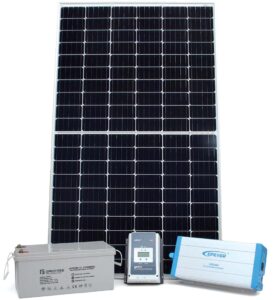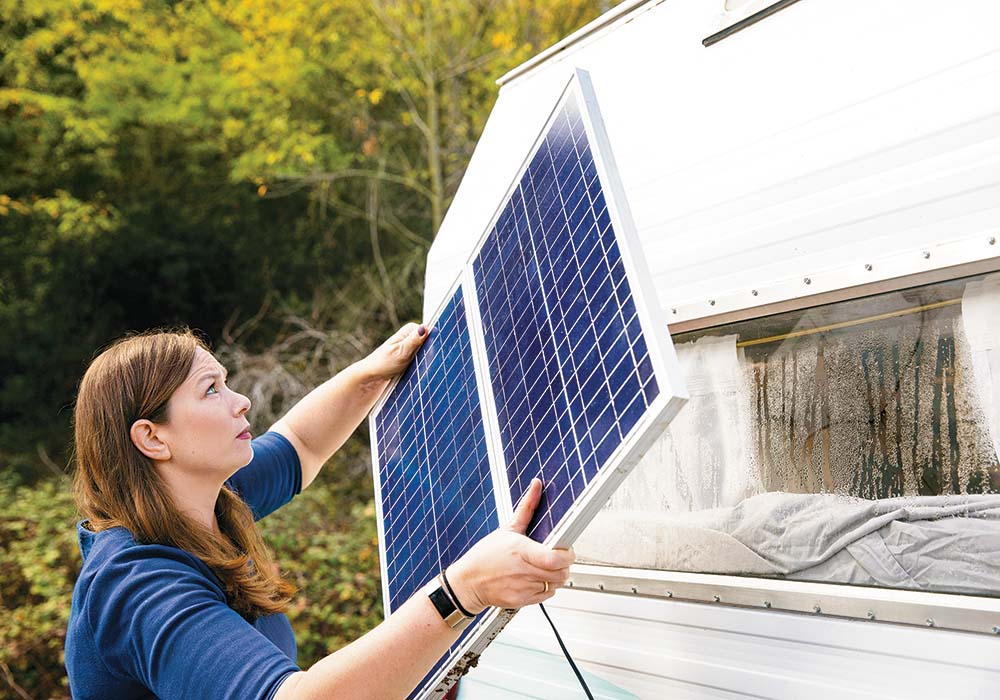More people on the road are choosing solar panels to generate their own electricity. MCD columnist Liz Dobson has the lowdown on what you need if you’re thinking about installing it in your motorhome or caravan.
It takes a little planning, but living off the grid is becoming more commonplace in New Zealand than ever before. Once considered something only for the super-rich, solar power is now not only more accessible, but is also more financially viable.
Tiny houses and remote baches have been using solar panels to provide power for a years, but options for caravans and motorhomes have been a little limited until recently. There were issues in the past with the large size of the panels plus the weight of the inverters, all of which put pressure on the payload of the vehicle.
But with advances in solar panel production and more companies making them, prices are becoming affordable for motorhomers and caravaners who want easy off-grid living.
What is solar power?
Solar technology harnesses the sun’s energy and converts it into clean, consumable electricity at 12V DC (Direct Current). Early uses of solar power included focusing the sun’s energy through a magnifying glass to start fires for cooking.
The electricity generated by a small solar panel can keep a small battery topped up, while a larger panel set up can charge batteries while producing enough power to run 12V appliances like fridges, lighting, and basic electronics. An inverter can be also installed into a system with the capability of powering more complex 240V appliances and more frequently-used items close at hand.
Solar panel DIY kits
While many companies offer good solar power installation services, there are plenty of kits you can buy to install it yourself. According to Kiwi outdoor accessories supplier Burnsco, RVs’ solar power operates on low voltage 12V DC, so there is a relatively low risk of harm to yourself or to the installation. A correctly installed solar setup, with proper wiring and a suitable regulator, is a safe and relatively maintenance-free way of maintaining your battery system.

Kiwi companies such as the aptly-named Gridfree produce The Weekend Warrior kit, an all-in-one DIY off-grid solar van kit “that powers your weekends away from the city”. It costs $3599 and allows you, per day, six hours of 24W bulb lighting, two hours; television, 10 minutes microwave use, two hours of laptop charging, six hours of phone charge, kettle use for 15 minutes, and 24 hours of an efficient fridge freezer. Gridfree says the above estimate is “based off the New Zealand winter average of hours of sunlight per day,” excluding situations like ongoing poor weather.
As always, YouTube is your friend if you’re installing yourself; there are many vlogs showing how to install panels on your motorhome or caravan. And when it comes to maintenance of the panels, it’s as simple as giving them a regular clean as solar panels consume no fuel, or have no moving parts to wear out.
Solar panel shopping: What to buy
Solar panels: Multiple solar panels can be used in a single setup to generate maximum power, depending on vehicle size. Solar panels in leisure applications typically range from 10-160 watts.
Regulator: This connects to the solar panel. Depending on conditions, the voltage produced by a solar panel can vary. In low light conditions, voltage may be too low to create a charge, while voltage produced by midday sun can overcharge and damage batteries. A regulator should always be connected between a larger panel and the battery it is supplying to regulate the electricity directed into the battery, and maintain an optimum charge rate.
Most regulators have output connections that allow DC appliances to be connected. The regulator will cut off the power supply to the DC appliances if it senses your battery voltage is too low.
Batteries: These store the electricity generated by your solar panel and are used to supply power to various appliances. A deep cycle or ‘house’ battery is recommended for solar systems used for powering these appliances. These are designed to cope with constant discharge and charging cycles. Various capacities and types of deep cycle batteries like AGM or lead-acid can be used depending on the nature and size of your panel setup. The latest technology new lithium batteries are super-strong, very safe and designed to last up to five times longer than an AGM battery, making them well worth the investment.
Inverter: The majority of inverter appliances found in RVs are predominantly 12V DC, and are specifically designed to run on a lower voltage than your household 240V alternative. Household consumer electronics like a computer or a microwave require a lot of power, however, and struggle to run on a lower voltage, so an inverter is designed to convert 12V DC to 240V AC (mains) power. Having an inverter connected to the battery allows household consumer electronics to be charged or used. Inverters should be mounted as close as practical to the battery.
Solar Power System Wiring: This connects to the regulator; the length of this run will determine what size cable you need to use. The longer the run, the larger the cable diameter you require. The regulator should be mounted as close as practical to the battery and connected.
Looking for motorhomes or caravans for sale in NZ? Browse our latest listings here.






